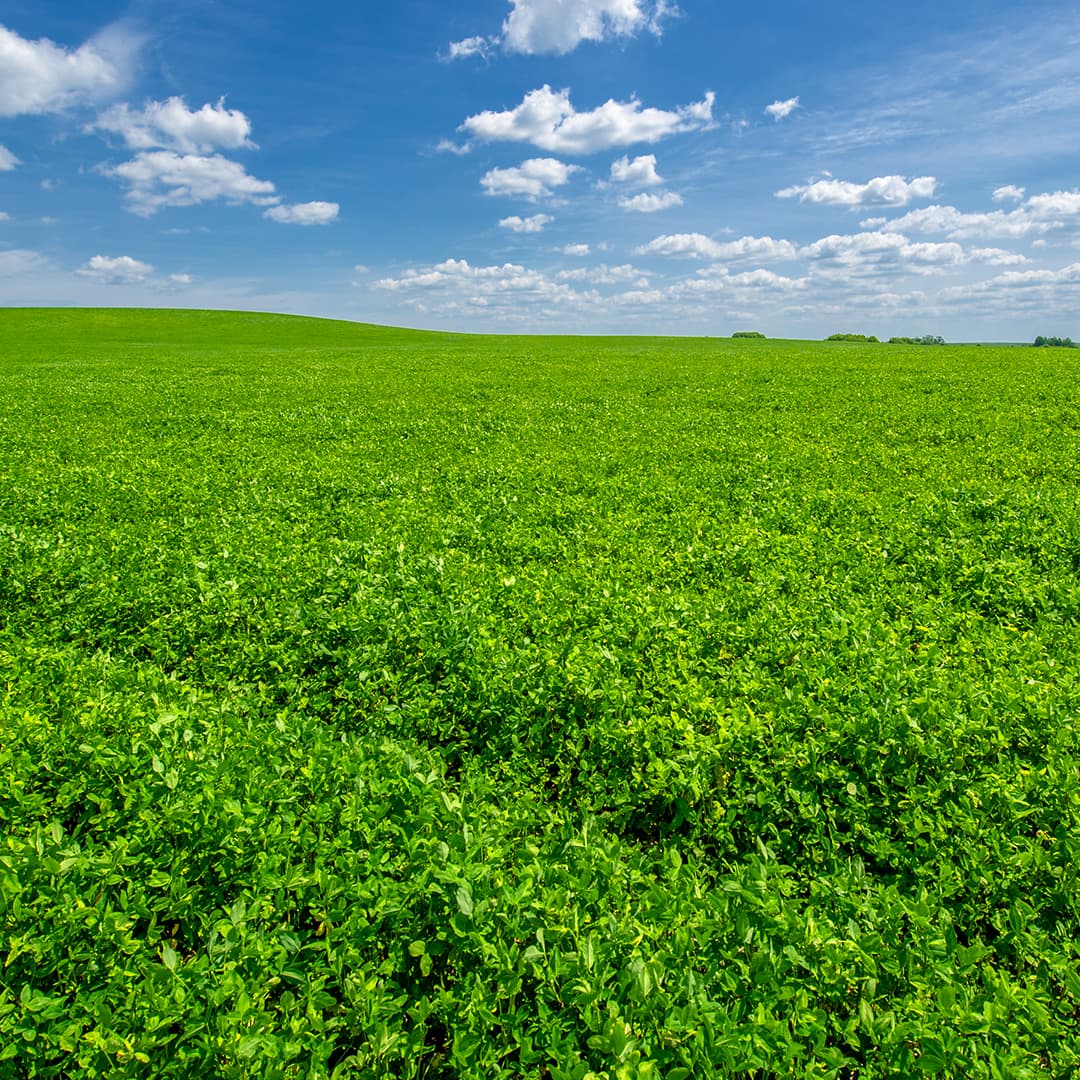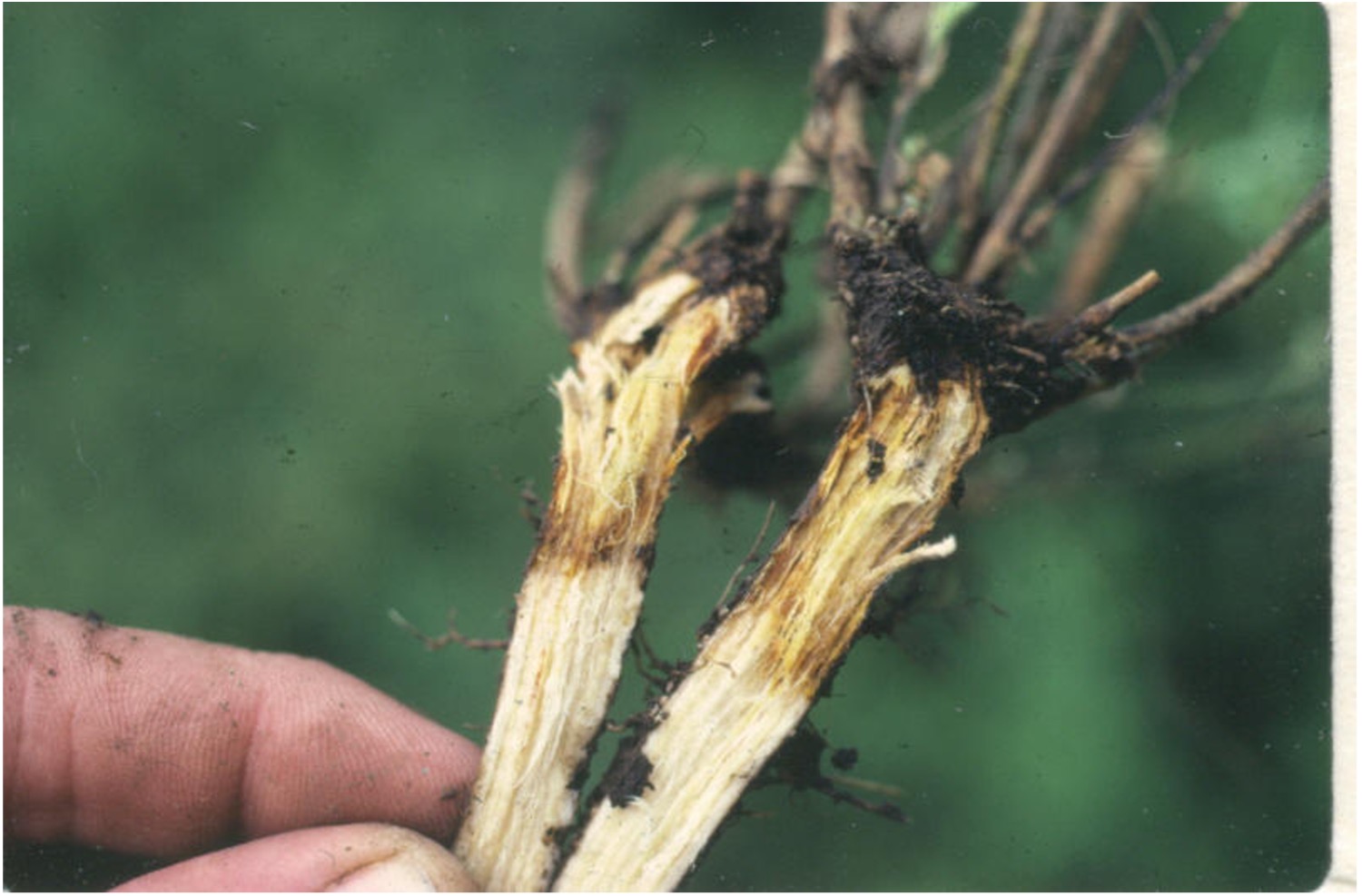STEP 1. Establish a proper stand
Successful grazing requires a good alfalfa stand. Start the stand by adding lime to raise the pH to 6.5 or higher and fertilize according to current soil test recommendation. Select the best variety of alfalfa for your particular soil environment - one that has been specifically developed and tested under actual livestock conditions, such as any of the AmeriStand or AlfaGraze line of alfalfa varieties available exclusively from America’s Alfalfa. Seed at 15 lbs. per acre or higher during the recommended time of year (but generally 20% higher in South and far West). Include a grass when needed for erosion control or as an aid for bloat control. Control weeds and insects to enhance establishment and production.
STEP 2. Guard against bloat
One of the biggest reasons producers don’t graze their alfalfa is fear of bloat.
However, this fear can be reduced with proper management. The following are some tried and proven practices to reduce the possibility of bloat.
- Pre-fill hungry animals with dry hay and/or bunk feed.
- Put animals onto alfalfa pastures for short periods initially.
- Always keep dry hay available during grazing.
- Watch animals carefully on cool, wet days. Lush forage greatly increases consumption, thus increasing bloat potential.
- Use poloxolene. Poloxolene fed prior to and during grazing, according to recommendations, reduces bloat.
STEP 3. Decide how you want to graze
CONTINUOUS GRAZING
While Alfagraze and other grazing tolerant varieties will survive close, continuous grazing and still bounce back, such management will reduce yields and allow unwanted weed invasion. When continuous grazing is practiced, 7 to 8 inches of growth should be maintained during the grazing season. Dr. Carl Hoveland and associates at the University of Georgia found that by increasing fertility with phosphate and potash and allowing sufficient recovery time for a generous canopy to develop, Alfagraze again became the permanent species.
ROTATIONAL GRAZING
When rotational grazing and cattle are cycled off for two to three weeks or more, growth can be taken much closer, even 2 to 3 inches. Rotational grazing with higher stocking rates is made easier with the recent introduction of lightweight movable fencing. Fences can be moved not only to accommodate animals and plant growth with animal needs, but also water and shade.
STEP 4. Grazing in the establishment year
The first crop can be cut for hay or grazed at early bloom. Grazing can begin, depending on the weather, about three to four weeks later when the alfalfa gets 10 to 12 inches of growth. In areas with cold winters, remove livestock four to five weeks before the historic freeze for winter stand protection. In areas with mild winters and when using non-dormant, grazing tolerant varieties, grazing can continue throughout the winter as feed is available and needed.
STEP 5. Grazing alfalfa after the seedling year
The way you start grazing in the spring determines the grazing pattern for the remainder of the year. Put animals on the acreage when the growth is at least 6 inches tall.
As the forage in the pasture exceeds animal needs, reduce the size of the pasture by adding a temporary fence. This adjusts forage available to animal needs and reduces waste.
When the reduced pasture again gets ahead of the animals, repeat the procedure.
Continue moving fences and reducing pasture size until the first fenced-off areas has recovered for grazing (about 10 to 12 inches tall). This normally takes 21 to 24 days. When and if a surplus occurs, harvest the excess as hay or silage for use during droughts, excessive rainfall periods and winter feeding.
Completion of the first cycle results in staggered pasture heights for rotational grazing for the rest of the season. Each grazing cycle for the rest of the season should be initiated before alfalfa/grass blooms.
Livestock should be removed four to five weeks before the historic freeze date for winter protection. Should weeds become a problem in either a continuous or rotational system, follow labeled herbicide recommendations for control.
STEP 6: Figure out your stocking rates
Ruminant animals (cattle, sheep, goats, deer) will graze and waste about 3 percent of their body weight daily (dry matter). When grazing use a 4 percent daily allowance until the system is refined on your farm. As yields increase, the carrying capacity increases accordingly.
| Calculating stocking rates |
Example |
Your figures |
| 1. Number of animals |
40 |
|
| 2. Avg. weight of animals (lbs.) |
x 1,000 |
|
| 3. Daily allowance |
x .04 |
x .04 |
| 4. Dry matter removed/day |
1,600 |
|
| 5. Estimated yield (lbs./acre) per pasture |
1,000 |
|
| 6. Acres/day needed to feed herd (line 4 / line 5) |
1.6 |



